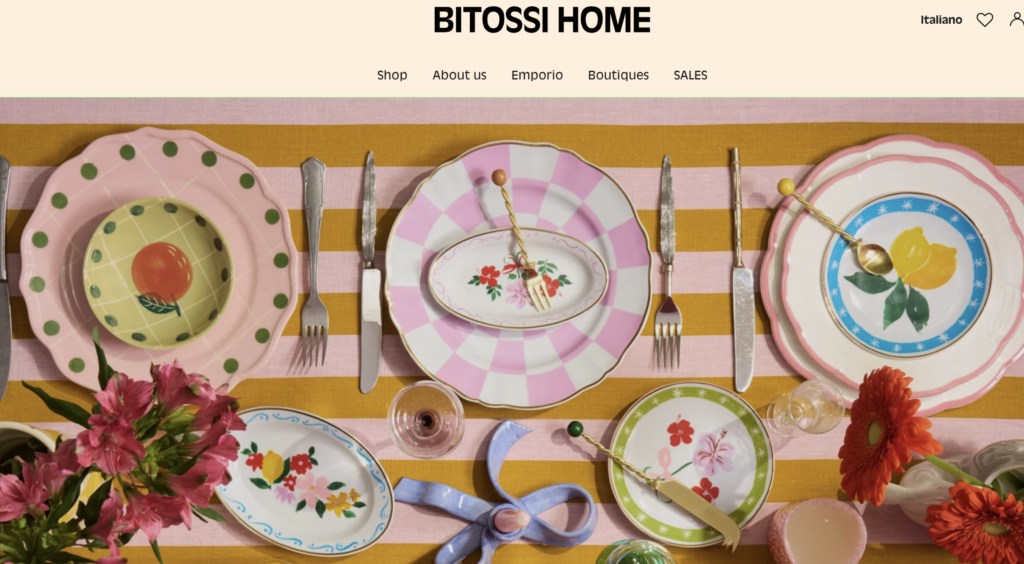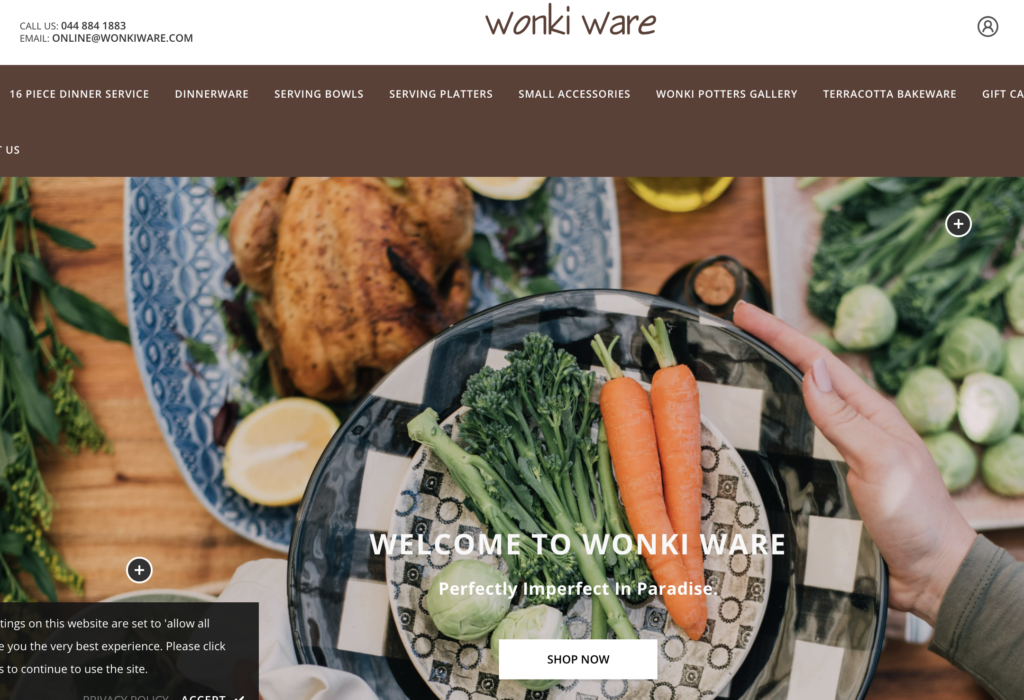In today’s world, where snapping a photo often comes before taking the first bite, visual food presentation has never been more important. Social media, global culinary influences, and an ever-rising standard of aesthetics are all pushing tableware design forward. And among all materials, ceramic dinnerware is taking center stage in transforming how food looks and feels on the plate.
From Michelin-starred restaurants to everyday kitchens, more and more people are turning to handmade ceramic plates, glazed ceramic soup bowls, and vintage ceramic dinnerware sets—not just for practicality, but to express a lifestyle and visual language. So, how exactly is ceramic dinnerware reshaping the way we present food? Let’s explore five powerful shifts.
1. Beyond Function: Ceramics as Visual Art
Traditionally, tableware was chosen for its function—how sturdy it was, how easy it was to clean. But modern consumers now seek harmony between form and function.
Ceramic dinnerware delivers a richer visual experience thanks to its natural textures and a wide range of glazes. Whether it’s soft ivory, bold forest green, or hand-brushed patterns, ceramic pieces provide the perfect “canvas” for any dish. Especially in modern fusion cuisines, Japanese kaiseki, or rustic Italian meals, ceramics don’t just hold the food—they become part of the plating itself.
2. Global Cultural Influences Driving Diverse Styles
As global cultural exchange deepens, ceramic dinnerware design is becoming increasingly multicultural and versatile. Designers are drawing inspiration from around the world, blending local traditions with modern aesthetics.
In Italy, Bitossi Home is known for its bold hand-glazed patterns and geometric color combinations, ideal for presenting Mediterranean salads or creative desserts in vibrant fashion.

In the U.S., Canvas Home focuses on eco-conscious materials and matte finishes. Their minimalist ceramics pair beautifully with modern American cuisine and health-conscious meals, offering both a clean look and a sustainable message.
In Hong Kong, Loveramics is a favorite among coffee shops and dessert cafés, thanks to its professional glaze finishes and contemporary ceramic coffee cups and dessert plates—perfect for visual storytelling on social media.
From South Africa, Wonki Ware showcases a rustic artisanal charm through its irregular forms and earthy tones. Their pieces are ideal for farm-to-table restaurants and organic recipes.

Meanwhile, in Australia, NORITAKE blends Japanese precision with modern minimalism. Their ceramic collections fit beautifully in upscale fusion dining settings, from boutique hotels to wedding banquets.
These brands prove that ceramic dinnerware doesn’t just “look nice”—it tells stories and conveys emotion, turning every meal into a cross-cultural experience.
3. Social Media Boosts “Photogenic” Ceramic Dinnerware
Today, tableware isn’t just for eating—it’s for sharing. Food styling, coffee aesthetics, and dessert layouts rely heavily on Instagrammable ceramic plates and bowls.
Matte ceramic plates, organically shaped ceramic dishes, and subtly glazed ceramic mugs are especially popular on platforms like TikTok and Instagram. Their textures and soft lighting make every dish stand out.
Many cross-border e-commerce sellers and gift brands are now consciously choosing “camera-friendly” ceramic dinnerware. Examples of trending search phrases include:
- aesthetic ceramic dinner plates for photography
- handmade ceramic bowls for Instagram chefs
- rustic ceramic dish sets for food bloggers
- color-glazed ceramic serving plates for content creators
This surge in search interest reflects a shift in consumer priorities—ceramics are now a visual tool for storytelling.
4. Personalized Ceramic Dinnerware Gains Momentum
Tableware is evolving from being uniform and mass-produced to being personalized and brand-specific. Consumers now seek ceramic dinnerware that reflects their identities or brand values.
From name-engraved ceramic plates to seasonal pattern sets and logo-customized ceramic mugs, custom ceramic tableware is booming—especially in the gift, hospitality, and wedding industries.
In high-end restaurants and boutique hotels, personalized ceramic dinnerware serves as part of a brand’s image. Compared to metal or plastic, ceramics offer greater flexibility in shapes, textures, and colors, making them perfect for storytelling and visual branding.
5. Sustainability Drives Ceramics Back to the Spotlight
As eco-conscious lifestyles gain popularity, people are choosing materials that align with their environmental values. Ceramic dinnerware—made from natural clay, quartz, and other sustainable minerals—is becoming a popular eco-friendly choice.
Unlike disposable plastic or even some metals, ceramics have a long life span and are recyclable or biodegradable under the right conditions. In many eco-forward households and hospitality spaces, sustainable ceramic dinnerware sets are now preferred.
In markets like Europe and Australia, where sustainability meets design, ceramic products that emphasize low-carbon, natural elegance are enjoying significant growth.
FAQ – People Also Ask…
Q1: Is ceramic dinnerware too fragile for daily use?
A: Modern ceramic techniques significantly improve durability. High-temperature firing and dense clay formulas make quality ceramic dinnerware highly resistant to daily wear and minor impact.
Q2: Can ceramic dinnerware go in the microwave or dishwasher?
A: Most ceramic dinnerware is microwave and dishwasher safe. However, pieces with metallic edges or delicate glazes should be hand-washed to maintain their beauty.
Q3: How do I choose ceramic plates that look good on social media?
A: Look for matte glazes, earthy tones, and organically shaped pieces. Ivory, smoky blue, deep green, and terracotta shades create strong contrast with most foods.
Q4: What types of cuisine pair best with ceramic dinnerware?
A: Ceramics are incredibly versatile. Whether you’re plating steak, sushi, Mediterranean mezze, or Korean banchan, there’s a ceramic style that enhances each dish.
Q5: Where can I get custom ceramic dinnerware?
A: Many brands offer customization. For larger orders or specific designs, working directly with an OEM or ODM ceramic factory ensures you get tailored solutions for retail, gifting, or hospitality purposes.
Final Thoughts: Ceramics Are Redefining Tabletop Aesthetics
Ceramics are no longer your grandmother’s tableware—they are a new language of visual expression. By combining culture, design, sustainability, personalization, and practicality, ceramic dinnerware is rapidly becoming the heart of modern table culture.
Whether you’re a cross-border e-commerce seller, a home & kitchen brand, a restaurant buyer, or a gift merchant, choosing the right ceramic dinnerware isn’t just about functionality—it’s about curating a lifestyle and telling your story through every plate and bowl.

